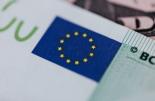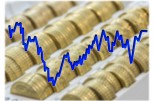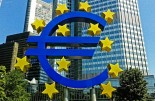Carmignac: Two diverging economies, one shared outlook
Carmignac: Two diverging economies, one shared outlook

By Kevin Thozet, Portfolio Advisor and Member of the Investment Committee, Carmignac
Despite differing economic backdrops on either side of the Atlantic, the European Central Bank (ECB) and the US Federal Reserve (FED) appear to be moving in tandem. At least for now.
With both central banks expected to stand pat in July and market participants attaching near-identical odds of a rate cut in September, the message from monetary authorities is clear: more clarity is needed.
This prudent stance is informed by the twin uncertainties of shifting trade dynamics and evolving fiscal support. Factors that loom large over inflation, growth and currency trajectories.
ECB: No sense of emergency, yet
Over the past year, the ECB has reduced its key interest rates by 200 basis points, bringing them into what many consider the neutral range—between 1.75% and 2.25%. The monetary environment in the euro area looks as if it is finely balanced: not too hot, not too cold.
However, that tranquility may be short lived. Two major uncertainties are keeping the ECB on its toes.
First, the potential imposition of US–EU tariffs (with critical details expected on 1 August) has understandably, made monetary policymakers cautious. Second, while German fiscal stimulus (set for formal approval in September) offers promising early signals, the will to act is constrained by the capacity to deliver. Both factors raise questions over how long inflation will continue to undershoot across the continent.
With sufficient rationale to pause its cutting cycle, and inconclusive recent data on growth and inflation, so-called "insurance cuts” are unlikely in July. Rates are set to stay steady.
Looking ahead to September, markets currently price a 50% chance of a rate cut. However, the lower growth and lower inflation impact of a stronger euro, moderating wage growth and ongoing risks of an inflation undershoot due to an increase in cheap Chinese imports as they are diverted from to the US, may tilt the scales. With headline inflation near target and leading indicators pointing towards continued economic normalisation, we believe the odds of a cut in September are higher than current market consensus.
The ECB could bring its policy rate down towards 1.5%, especially if tariff uncertainties resolve negatively or if inflation remains below target.
Fed: Powell’s balancing act between policy rates and politics
The Fed also finds itself navigating an ambiguous environment, though for very different reasons.
On the policy front, US macroeconomic fundamentals remain robust. Employment remains strong, albeit notably due to tightening labour supply because of immigration constraints. Consumer spending is strong. And fiscal policy continues to fuel an economy which has been growing above potential for more than four straight years.
But the politics side of things is not quite so robust. Pressure has been building on the institution’s independence with the president’s blatant criticism of the Fed chair.
Between a hawk and a hard place
The Fed does not expect inflation to return to its 2% target before 2027 – a six year ‘miss’. And most recent inflation data are not particularly encouraging. We’re starting to see signs of import-cost pass-through due to tariffs. Core goods inflation has already picked up modestly, and the ‘FIFO’ model, which dominates US retailers, is indicating there’s more to come once import duties are more broadly enforced.
Jerome Powell has come under increasing political pressure, but any speculation about his replacement as chair should be taken with a pinch of salt. President Trump stands to gain little from reshuffling the Fed leadership just six months ahead of the end of Powell’s term. And the risks of undermining the Fed’s credibility on the dollar, inflation expectations and long-term bond yields are too high. The central bank's credibility has played a critical role in anchoring long-term inflation expectations since its dramatic resurgence in 2022. Any move toward fiscal dominance or premature easing could jeopardise that hard-won stability with massive negative ripple effects.
As such, our central case is for the Fed to keep policy rates where they are in September as well – provided the labour market stays relatively stable.
Portfolio impact
Though expectations for both central banks appear aligned in the short term, market pricing reveals striking differences:
- ECB: market participants put a 30% probability on rates remaining at or above 2% by year end
- Fed: market participants put a 30% probability on the Fed fund’s rate reaching 3.5% by year end
In this context, we have a constructive outlook on short-term euro rates, with downside risk to the ECB’s key rate. And a more cautious approach to US short-term rates, where markets may be too optimistic about easing.
On longer maturities, we adopt a negative stance on duration, anticipating a steeper curve in the light of stronger fiscal expansion – notably if early cuts are combined with fiscal largess.
We prefer inflation-linked securities to hedge against resurfacing inflation risks – especially as, for now, inflation break-evens and inflation expectations have been kept in check.
We are also bearish on the dollar given the eroding credibility of US institutions, weakened by constant attacks against Powell and Fed independence, the surge in political uncertainty triggered by the trade war, and the reinforced risk of local inflation de-anchoring fueled by higher tariffs and loose fiscal stance.
In contrast, the ECB seems to be operating in a completely different climate. While it may seem counterintuitive, the pluralism of Europe - 27 member states with often divergent interests – makes interference more difficult and ultimately strengthens the institution's credibility in the markets. A context leading us to prefer the euro and European bonds.







